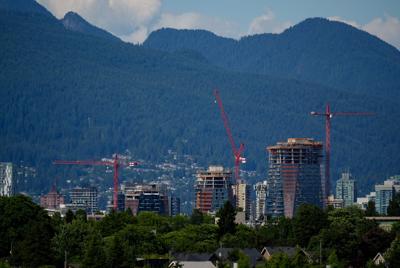Prime Minister Mark CarneyŌĆÖs proposed plan to build more housing through a new organization called Build Canada ╬┌č╗┤½├Įs sounds like it could be good news. But the decision to partner with the private sector on affordable housing spells danger. On Sunday, reported that the government is quietly creating the new agency that will provide public lands to private companies for housing.┬Ā
Few details are yet available ŌĆö but the participation of private developers could be a bad sign.┬Ā
Development is a big business in Canada. Many of the people reaping benefits from the housing crisis ŌĆö┬Āthe controlling shareholders and executives of companies like Mattamy ╬┌č╗┤½├Įs and Choice Properties ŌĆö are in fact the wealthiest people in the country, and they flex their power to keep housing un▓╣┤┌┤┌┤Ū░∙╗Õ▓╣▓·▒¶▒.╠²
Just six weeks ago, The Star reported that two real estate companies told the province to remove requirements for affordable housing on their projects ŌĆö or they might not build the housing developments at all.┬Ā
Ontario, being Ontario, acquiesced. Now, there will be no guarantee of affordable homes at 70 new housing developments across the city despite a desperate need for low-cost units. Cynically, one of the real estate investment trusts (REITs) cited the housing crisis in its argument to eliminate affordable units: ŌĆ£During a housing crisis, this dangerous disincentive acts directly contrary to the provincial and municipal mandate to bring housing to market faster,ŌĆØ lawyers for CT REIT wrote.┬Ā
What is happening in housing is illustrative of a broader problem facing Canadians: the disproportionate distribution of power that comes with extreme wealth inequality. If you follow the layers of holding companies, the two companies that axed affordable units are controlled by the superrich. Choice REIT is a : the Westons, of course, are the third richest family in the country, with a net worth of . The other REIT, CT REIT, is by Canadian Tire. Most of that companyŌĆÖs shares are , who may not be a billionaire but is among the in Canada with at least $125 million in assets.┬Ā
REITs like those connected to Canadian Tire and Loblaws wouldnŌĆÖt matter so much if ╬┌č╗┤½├Įnians could rely on a large stock of publicly built housing, as they could in the . But our federal and provincial governments abandoned their responsibilities for public housing . On this front, Canada wasnŌĆÖt an outlier. There was a global shift toward privatization: the selling off of public assets and increasing reliance on for-profit companies for necessities like housing.
Privatization gave way to the financialization of housing, helping to create the crisis we are currently in. Investment vehicles like Choice REIT and CT REIT bought up massive amounts of housing during the ŌĆś90s and 2000s. In 1993, in assets. Now, they own more than 900 times that amount, with total assets worth $75 billion.
Alas, that shift is not limited to Canada or its housing market. The current era in which billionaires have proliferated directly succeeded the global era of privatization and financialization. In 1987, there were only 104 billionaires in the world. Today, there are more than , including . Billionaires influence CanadiansŌĆÖ supplies of food (the Westons), housing ( Mattamy ╬┌č╗┤½├Įs is the ), communications infrastructure (the ), news sources (the ) ŌĆö even our toilet paper (the ).
That trend looks set to continue. The Liberal party has already paved the way for possible in municipal hydro and water services, transit infrastructure, and airports, and Carney is promising massive cuts to the public service. If this process continues, we could arrive at a dystopian situation in which CanadaŌĆÖs next crop of billionaires could make their fortunes off our drinking water.┬Ā
On its surface, CarneyŌĆÖs plan to get the federal government back into housing development appears to be positive. But what remains to be seen is how much influence companies like those two Ontario REITs will wield over the process. If private development is involved in any way, Canadians may be more likely to receive publicly-subsidized unaffordable housing than a true public good.
Error! Sorry, there was an error processing your request.
There was a problem with the recaptcha. Please try again.
You may unsubscribe at any time. By signing up, you agree to our and . This site is protected by reCAPTCHA and the Google and apply.
Want more of the latest from us? Sign up for more at our newsletter page.



























To join the conversation set a first and last name in your user profile.
Sign in or register for free to join the Conversation